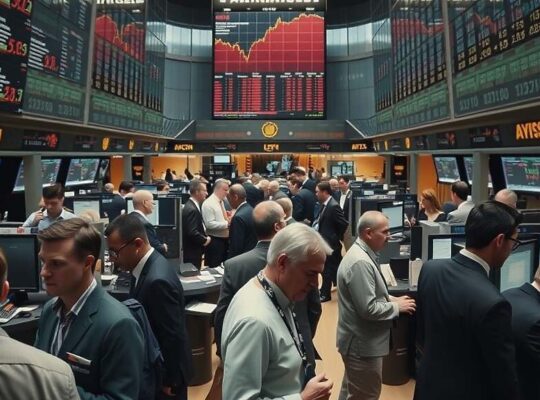The German DAX index exhibited a muted performance on Tuesday, closing marginally higher at 24,386.6 points. Following an opening at levels mirroring the previous day’s close, the index briefly dipped into negative territory during the morning session before recovering and fluctuating throughout the day. The slight uptick ultimately proved fragile, with gains eroded late in the trading period.
Market analysts attribute the fluctuating behavior to thin trading volumes and a reliance on external factors, particularly the trajectory of US financial markets. Andreas Lipkow, a prominent market analyst, commented on the persistent lack of impetus, emphasizing the DAX’s near-total dependence on developments across the Atlantic. The impending earnings season looms large, with the crucial question now being whether upcoming corporate reports will genuinely justify current valuation levels. A lack of robust domestic economic drivers appears to be exacerbating this vulnerability.
Within the DAX constituents, Symrise and SAP led the gainers on the Frankfurt exchange, while Bayer, Siemens Energy and BMW struggled at the bottom of the leaderboard. The performance highlighted underlying anxieties surrounding the industrial sector and the ongoing impact of global supply chain disruptions.
Adding to the complex economic picture, European gas prices edged upwards, with November delivery contracts reaching €33 per megawatt-hour. This increase translates to a potential consumer electricity price of at least 8 to 10 cents per kilowatt-hour, reinforcing concerns about the potential for persistent inflationary pressure on households. Conversely, the price of Brent crude oil declined slightly, falling to $65.33 per barrel. This limited decrease offers a temporary respite but does not fully alleviate concerns surrounding global energy market volatility.
The Euro also weakened against the US dollar, fetching $1.1667, further complicating the economic environment and introducing additional uncertainty regarding the future stability of European markets. The currency’s decline reflects broader anxieties about the sustainability of the Eurozone’s economic recovery and the potential for continued external headwinds. The interplay of these factors suggests a cautious outlook for the German economy, heavily reliant on external validations and susceptible to global market shifts.




